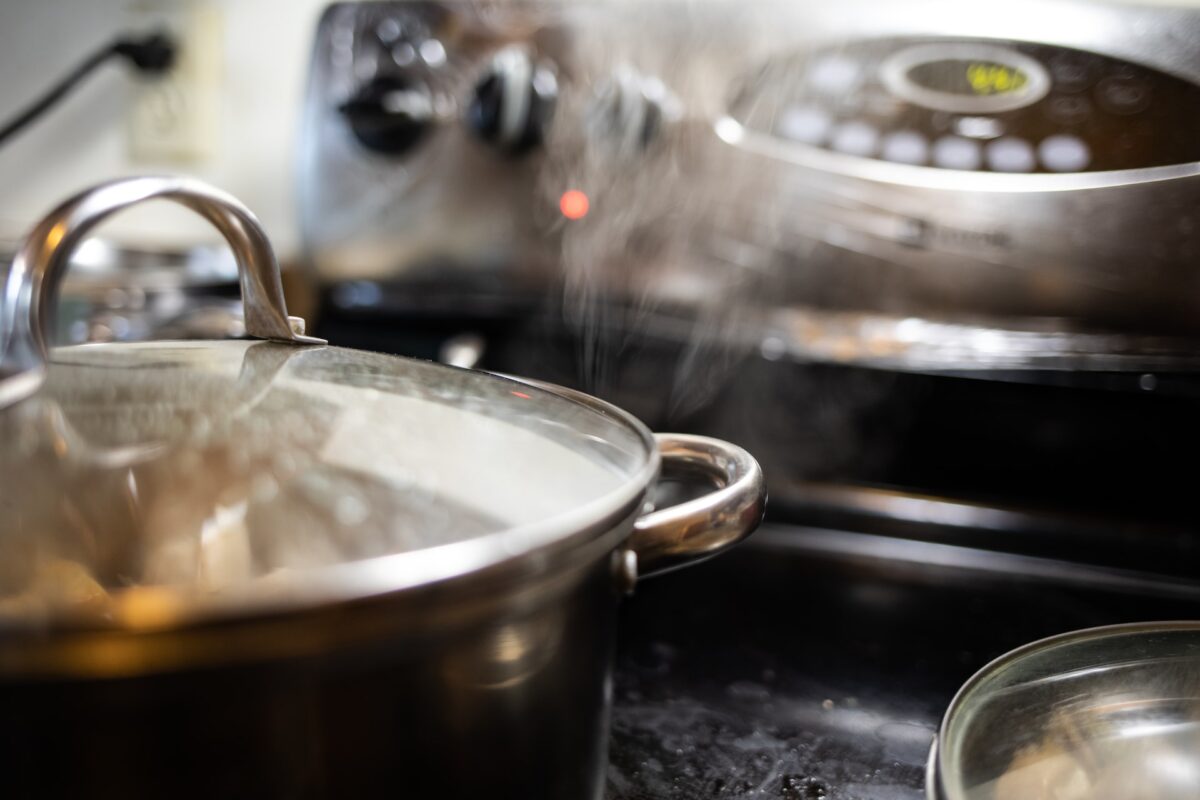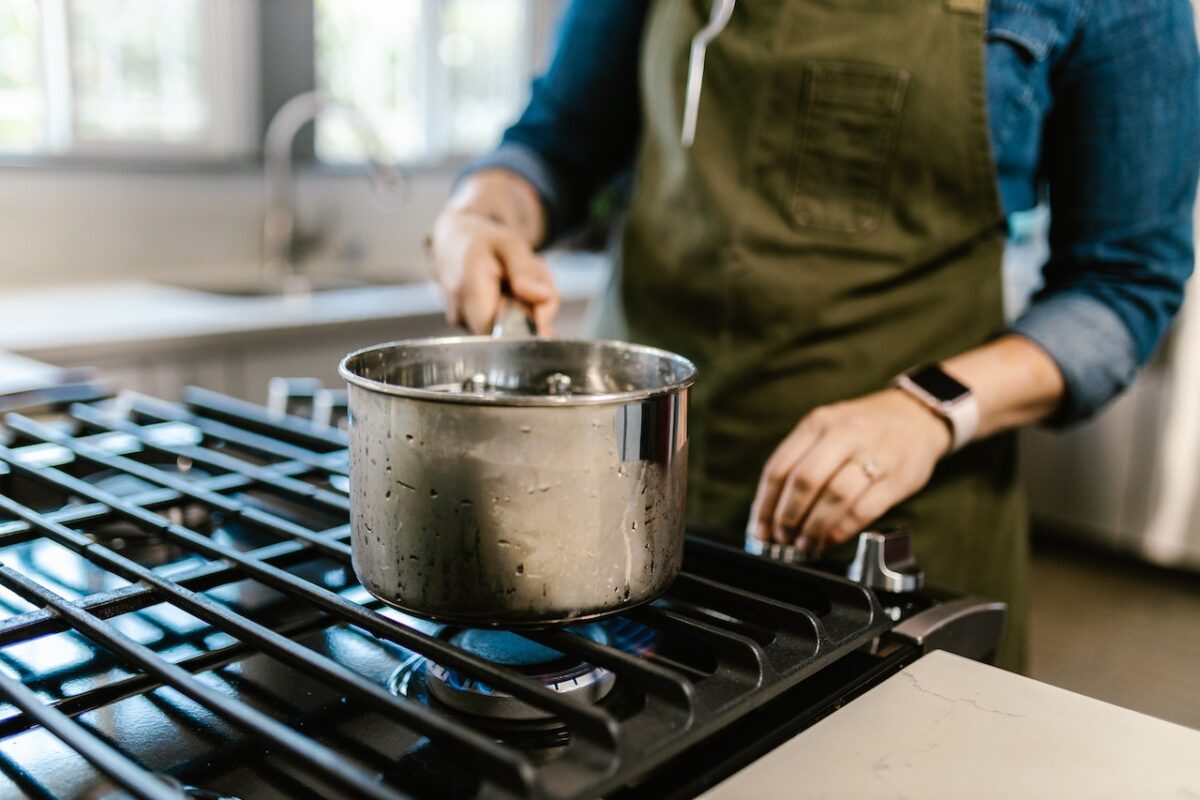As an Amazon Associate we earn from qualifying purchases.
While sous vide, also known as low-temperature, long-time (LTLT) cooking, is easy to master, it is not without challenges. You might have heard of this cooking method; however, do you know how much water it requires to sous vide? Well, some tricks and tips will help you get the most out of your next meal.
How Much Water Do I Need to Sous Vide?
The minimum water depth you need for this cooking technique is 2.5 inches. Whether you’re using a pot or specific sous vide container, this is the shallowest water level you can use. The container’s water level must be between the minimum and maximum range (5 gallons) for the process to work.
You can use any container that holds water, though I prefer using the LTLT machine because it helps in temperature and evaporation control.

You should use enough water to submerge your food completely if you are sous viding meat, poultry, or seafood. If you are cooking a large pot roast, you will need a larger amount of water to cover the roast.
If you’re sous viding vegetables or fruits, there is no need for such a large volume of water. You can typically get away with using about half a gallon of water per pound of vegetables.
Factors to Consider When Deciding How Much Water to Use
If you want consistent results every time, then there are a few different factors that will affect how much water you need for your machine:
Container Size and Volume
A container that’s too small won’t be able to hold enough water to fully submerge your ingredients, while a container that’s too big will use too much energy and require more water than necessary.
A good rule of thumb is to choose a pot that’s just large enough to fit whatever it is you are cooking. Generally speaking, you’ll need a minimum 4 quart capacity for anything requiring an immersion circulator.
Different Foods and Cooking Times Will Require Different Amounts of Water
When deciding how much water to use, it’s essential to consider the size of the food and its cooking time. Foods like fish require more water than custard because they have a large surface area.
Foods that contain a lot of fat, like steak or chicken breast, will also take up more space in the bag due to their density.
Can You Use This Cooking Technique Without Water?
As you’ve probably already guessed, the answer is no. You can’t use this sous vide cooking technique without water.

Water is used in the process for a few reasons:
Retains Flavor
When you cook meat, it loses moisture through evaporation. If you want the meat to keep its juices, you must keep them from evaporating. This is true if you use LTLT cooking or not.
The difference is that in LTLT cooking, the temperature is much lower than what I normally use for roasting or grilling, so there is less evaporation.
Distributes Heat Evenly
Another important function of water in this process is that it helps cook foods evenly. Water’s ability to conduct heat makes it possible for an entire piece of meat to be cooked evenly without burning or overcooking any part of it.
If you put a pork roast into an oven at 400 degrees Fahrenheit, the outside will burn before the inside is done—unless you wrap it in foil first.
When cooking with water, however, none of your food will be exposed directly to high heat. Instead, all items will be surrounded by water at a constant temperature (212 degrees Fahrenheit).
Creates a Vacuum Seal
The silicone sealed bag will be immersed in water, creating a vacuum seal that prevents air from reaching the food inside.
Because there is no air in the bag, there is no opportunity for browning reactions to occur on the meat’s surface when exposed to oxygen and high heat. As a result, meats stay tender instead of getting chewy during cooking.
Tips for Using Water in the LTLT Cooking Technique
LTLT cooking is a great way to cook meat, although it can be tricky to get the exact water temperature. Using a thermometer is the best way to go, though if you don’t have one, here are some tips for getting the water temperature right:
- The water should typically be between 130°F and 140°F. It’s more important to stay within this range than to hit an exact number.
- Make sure your pot is large enough for the food you’re cooking. Putting too much food in a small pot could spill over when you put it into the water bath.
- Ensure your pot has a well-fitting lid, so no water evaporates during cooking time.
- Heat the water before putting your food in it—though not too much!
- Use an instant-read thermometer to check the temperature of your water before adding food to it if you don’t have a dedicated LTLT cooker with its built-in thermometer.

Related Questions
Can You Preheat Water for Sous Vide?
You can preheat your water before you start cooking with sous vide. Preheating water for sous-vide prevents a sudden temperature change when adding food.
Can You Sous Vide on the Tank’s Bottom?
You can sous vide on the tank’s bottom, though it shouldn’t sit on it solely without the clip attached. You need not worry about the pod touching the bottom of the tank as long as the clip holds the unit to the tank.
How Much Water Do I Need for a Family-Sized Roast?
You can use 3 quarts for a family-sized roast. The general rule is 1 quart of water per pound of meat. This is enough water to submerge the entire piece of meat entirely. If you are cooking something smaller, like steaks or chicken breasts, and plan on finishing them on the grill after they come out of their bag, there’s no need for so much liquid.
Conclusion
The minimum amount of water needed to sous vide different foods is approximately 2.5 inches. Factors to consider when deciding how much water to use in this cooking technique include the container size, volume, and how often you cook.
